Susanne Kapoor’s Sicilian retreat
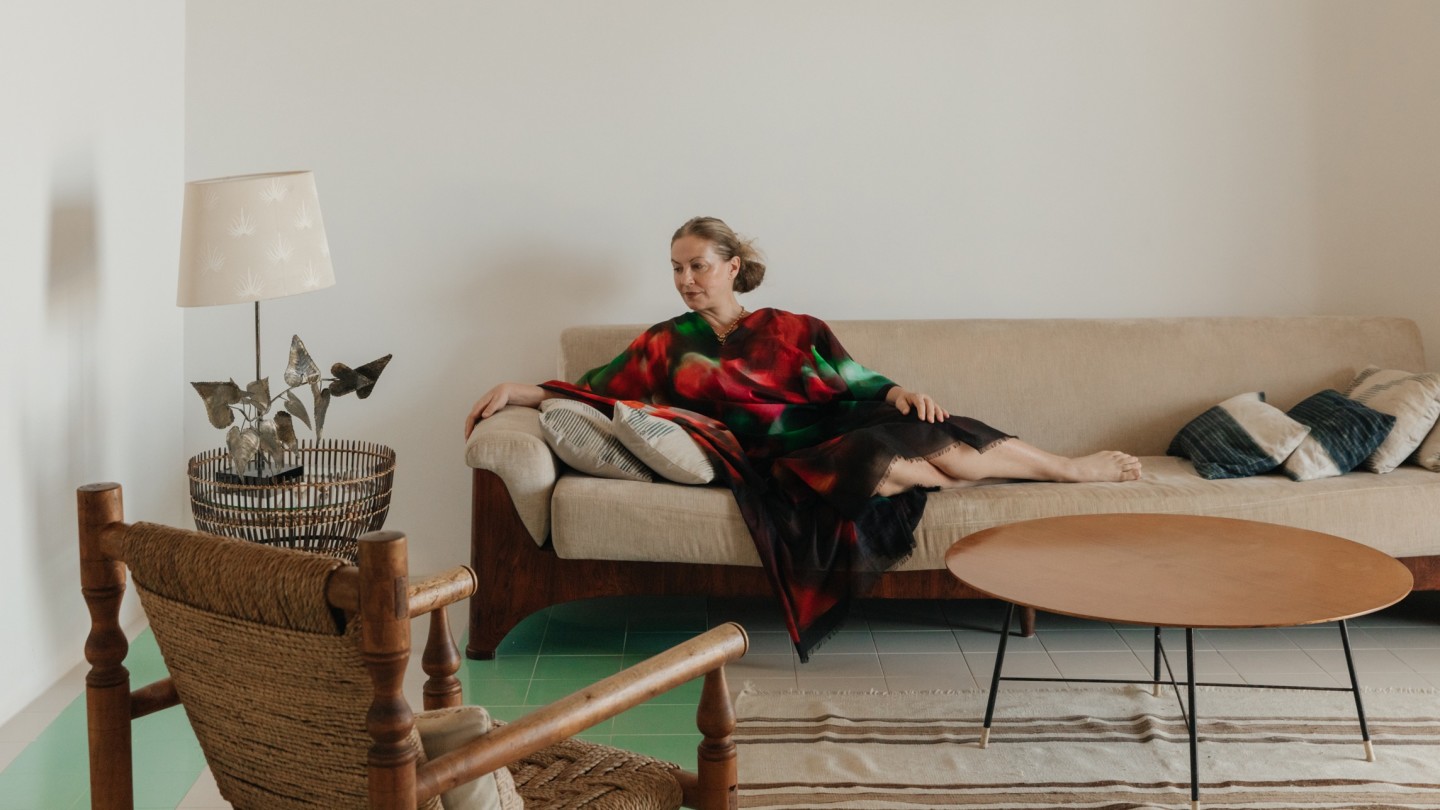
Roula Khalaf, Editor of the FT, selects her favourite stories in this weekly newsletter.
On a clear afternoon on the far north end of Lipari, the largest of the Aeolian islands, Susanne Kapoor unfurls herself from the rattan egg chair that hangs in the centre of her terrace. She lays down her book and puts on a pair of sea shoes, walks out of her arched gate, crosses the road and over a small cluster of rocks straight into the cerulean waters of the Tyrrhenian Sea.
“My main criterion when I started to look for a house here was to be able to walk out of the door and into the sea,” she says of the retreat she has owned since 2016. Like the island itself, Kapoor exudes understated elegance. Mother to Alba and Ishan, the German-born former wife of artist Anish Kapoor doesn’t so much walk as glide – her long, auburn hair pulled into a loose knot at the nape of her neck. Her lightly accented voice is distinctly low, soft and warm.
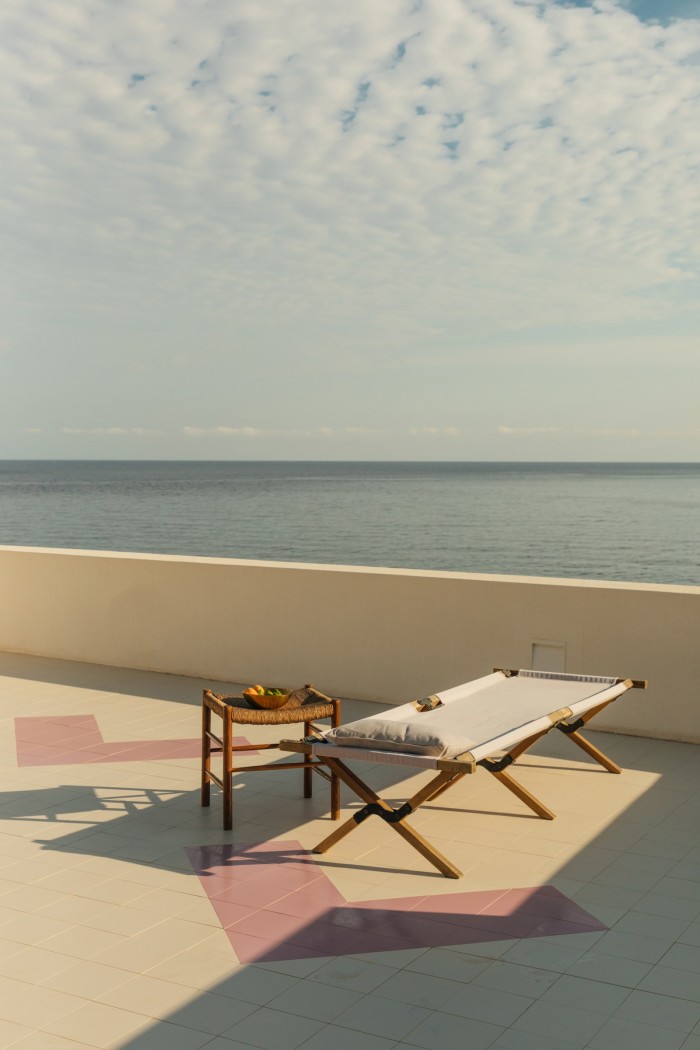
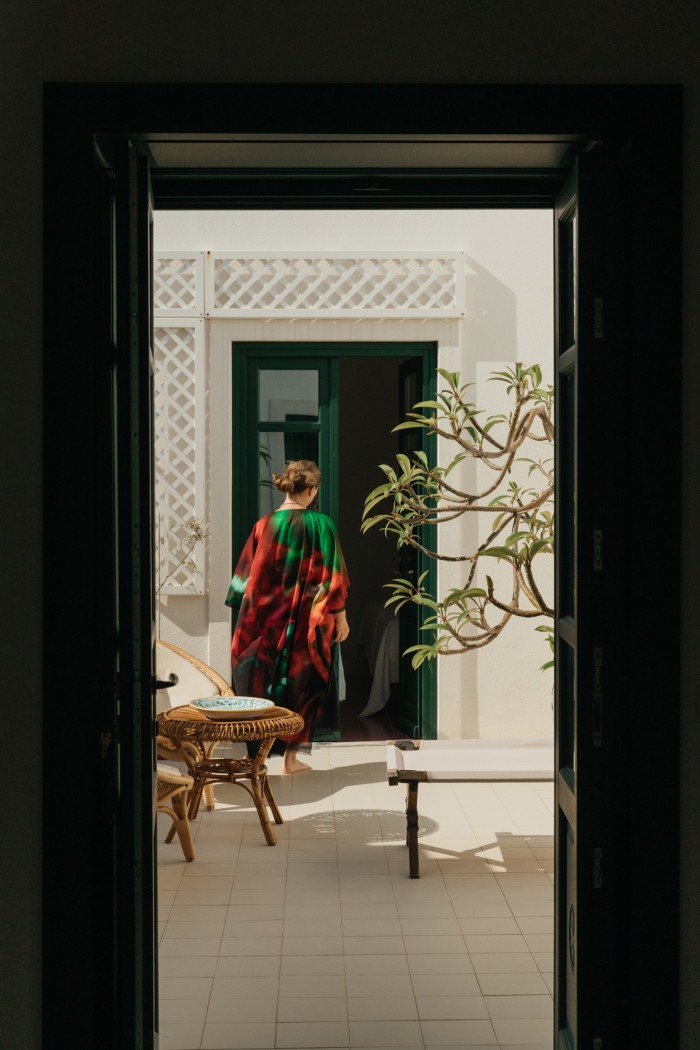
Kapoor’s pared-back aesthetic is a good match for the quiet volcanic archipelago overlooking Stromboli and Panarea off the northern coast of Sicily. Her house sits unobtrusively along the seafront on a long street at the bottom of a steep, winding road. There is nothing grand about the view other than the impressive coastal vistas that look out to the left of her terrace to the lush, green island of Salina. She is surrounded by volcanoes.
The street in which she lives boasts one café and one restaurant but it’s a hospitable spot and she is very fond of her neighbours. “Nando, a fisherman, and his wife Graziella live three doors away, along with Rosa, another neighbour. They knocked on our door the first night I moved in with the kids and made us a delicious dinner,” she says.
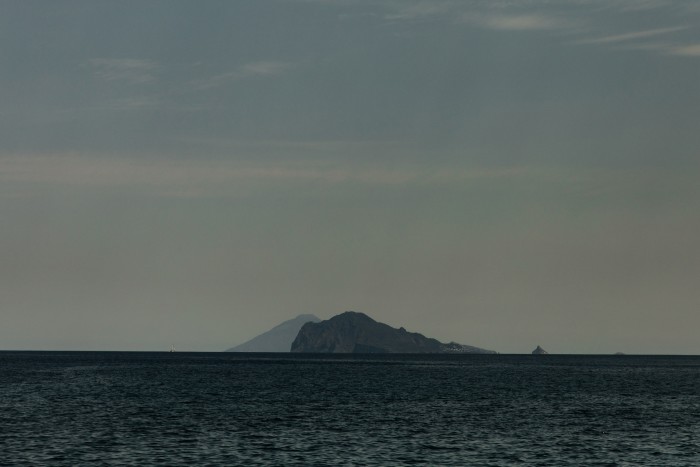
Kapoor has had her fair share of living in the centre of things. In her marriage (she and Anish divorced in 2013) she was the more outward and public-facing wife of a globally celebrated artist, with homes in London and on Harbour Island, a holiday destination for the social elite in the Bahamas. This house, on a very different kind of island, has been a clear departure. “Being married to a famous artist in the ’90s was very intense, a bit like being a rock ’n’ roll wife in a way. After we separated I realised I didn’t need so many ‘things’. I wanted a calm, quiet life,” she says of her decision to buy a summer home here. “I created my own family home, somewhere I’d be happy to spend time alone and where the children could come with me, and with their friends.” The children are now in their 20s, and have their own set of expectations. “It’s a different, more independent kind of holiday house for them,” adds Kapoor. “They like to come here in August when it’s way too hot for me!”
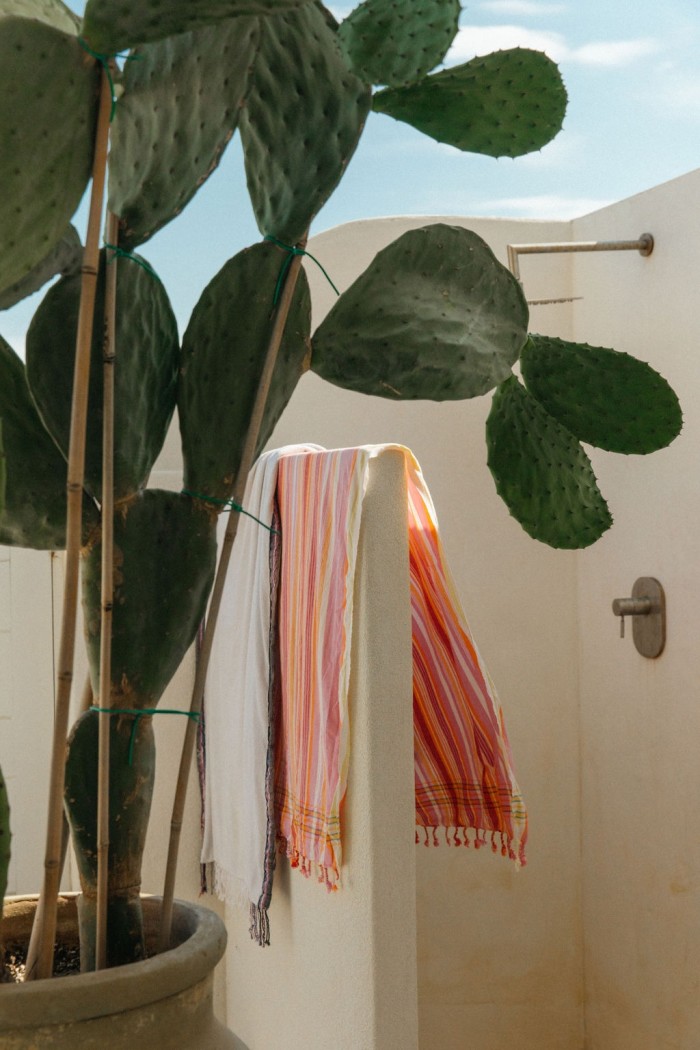
The house is an expression of Kapoor’s personal tastes and her post-separation independence. “Creating this home was to return to a sense of myself,” she continues. “I had been a wife and a mother for a long time, and I think that often when we do that, we neglect a part of ourselves – I had done that for 20 years. Although separating from someone is very painful and, at first, the idea of making a holiday home was daunting, it evolved into a lovely way for me to reclaim my own sense of the world. I didn’t have to consult or differ from anyone and that, almost to my surprise, was a huge liberation.”
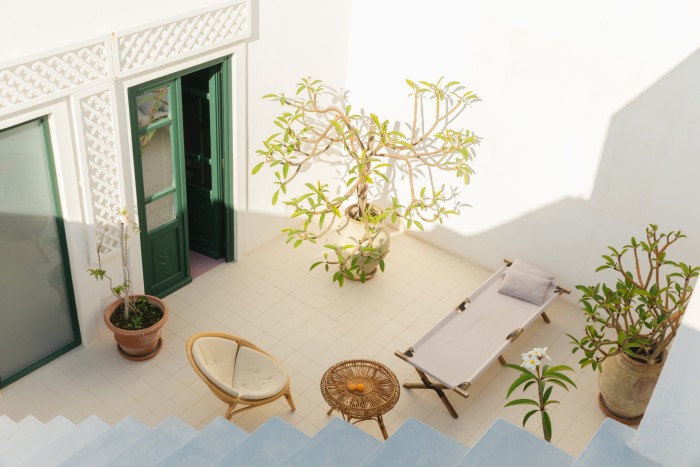
The house is a cool refuge from the relentless Sicilian summer. When Kapoor found it in 2016, it had been abandoned for many years having previously been home to multiple families. “It was dark with lots of winding staircases and divided into small rooms,” she recalls. “I wanted an uncluttered, open space.” She worked with a local architect and engineer Emanuele Carnevale to conjure this arrangement. “I wanted the house to flow – nothing harsh and no dark corners,” she says of her ambition. “I wanted to be able to open doors and see all the way out to the sea. I wanted to make corridors of light.”
The house now consists of two floors, with a central courtyard between the bedrooms on the ground floor hosting a camp bed, which functions as a sun lounger, and giant pots of sculptural frangipani in the corners of the space. “They make me think of India, a country I have visited many times and feel very connected to,” says Kapoor. A white staircase leads up onto a roof terrace.
The ground floor interior is open-plan, while above is a textured, pale-gold, diagonally woven bamboo ceiling, divided into three by simple arches. Inspired by traditional Mediterranean architecture, the arches lead the eye towards a dining area with a stainless-steel kitchen at the centre and a Gio Ponti table covered by a trompe-l’oeil embroidered tablecloth by the French artist-designer Sarah Espeute and surrounded by Vittorio Nobili chairs. The spaces are minimally furnished.
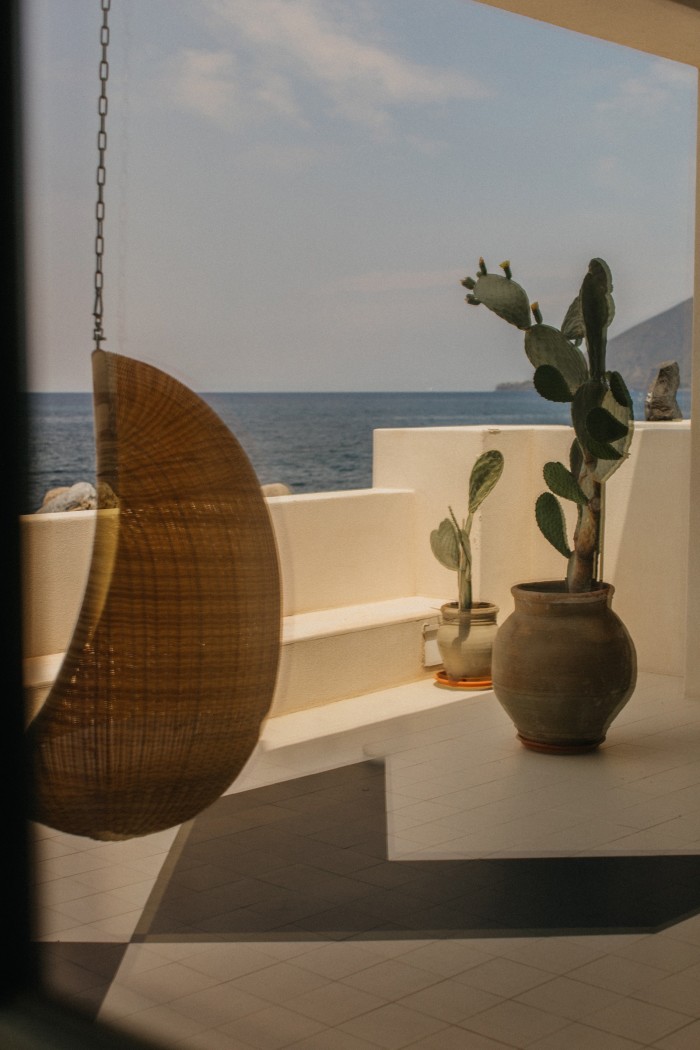
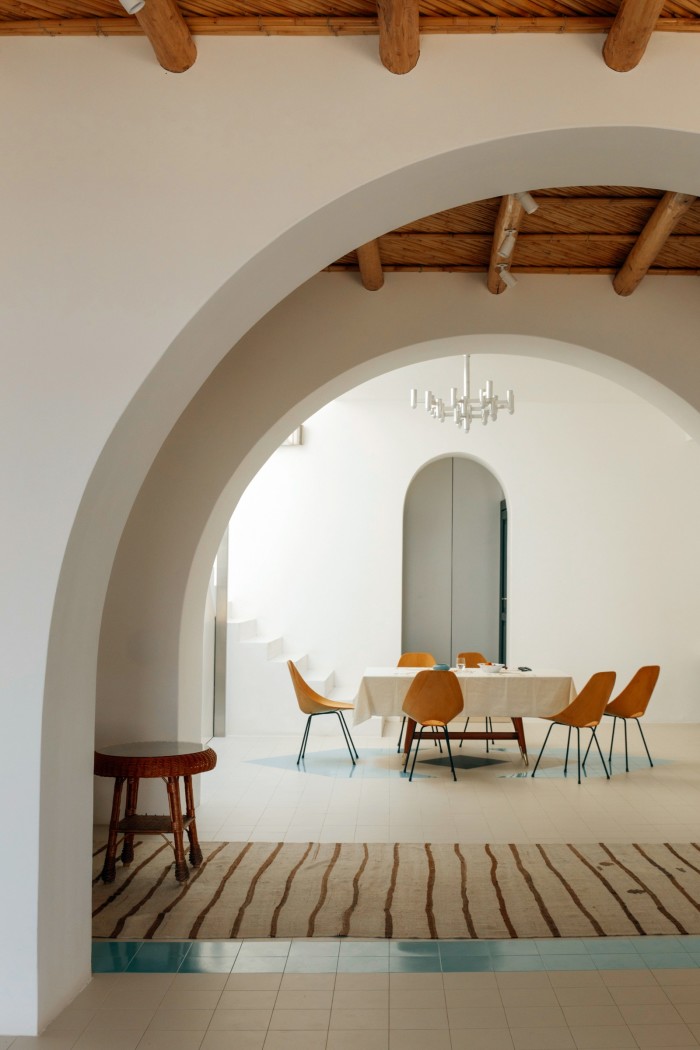
“I actually found the furnishing of the house difficult because I didn’t want it to interfere too much with the simplicity we had created,” says Kapoor. As such, the furniture was added to the house slowly. “I knew that I wanted it all to have feet, so you could see the floor. I wanted to keep a sense of lightness – a sense of floating throughout.”
This lightness of touch is reinforced by the delicacy of the pieces. At the heart of the space, a pair of locally made single beds acting as sofas sit on simply designed iron feet. Similarly, in her bedroom are three-legged bedside tables by Ashley Hicks on which she’s placed sculptural Noguchi table lamps with spindly metal legs, facing a midcentury mahogany closet with beige panels by André Sornay, also resting on two feet. In the adjoining bedroom stands a slatted wooden closet by Charlotte Perriand.
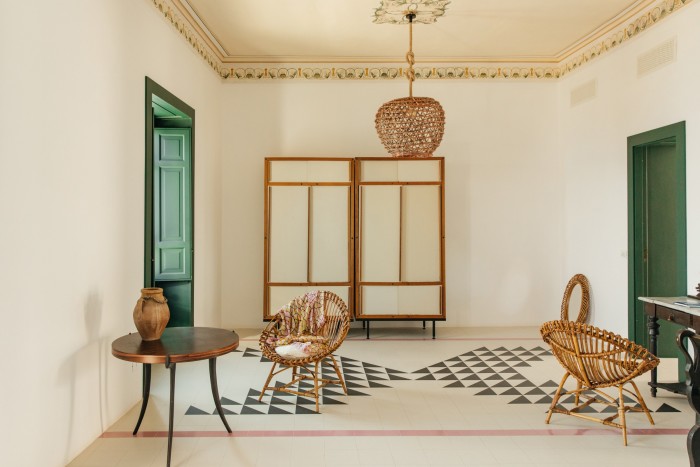
No art hangs in this house of white walls. Instead, Kapoor commissioned artist Tarka Kings to create an installation on the floor. The bespoke encaustic tiles run seamlessly throughout in outsized chevron designs in black, pink, green and pale blue. The pattern is a response to the volcanoes and helps delineate the space where they are laid. A carpet of art, which conveys a feminine sensibility, continues all the way through the house where five pink chevrons lead the eye out to the ocean, pointing out over the surrounding waters and the volcanic horizon beyond.
“You see tiles throughout the Mediterranean and I wanted something personal, something I am connected with,” says Kapoor of the commission. “I wanted the floor to be a two-dimensional artwork. The thing I love about abstract art is that it isn’t rational; you can’t look at a Rothko without wondering what it means.”
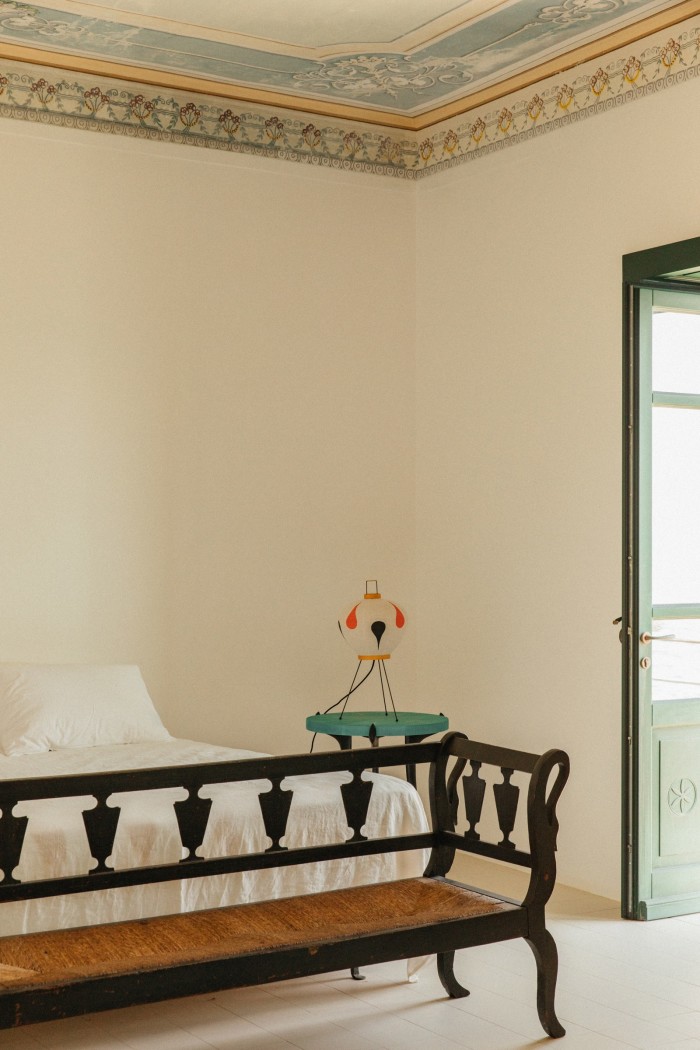
Susanne Kapoor grew up in a village in the Black Forest near Baden-Baden; she is the oldest of three children. “I was always interested in art and history. When I was a child, my favourite books were Greek mythology: the Iliad by Homer, and fairytales. There was always something about mythology that spoke to me.”
An avid reader, she recommends any visitors to read Sicily by John Julius Norwich and The Day of the Owl by Leonardo Sciascia. She is a regular visitor to the island’s archaeological museum and often takes friends and visitors to see the ancient baths. At university in Cologne she studied art history, philosophy and German literature. She met Anish Kapoor in 1991, the same year he had won the Turner Prize. “It was a dense time of really talented artists living and working in the city,” Kapoor remembers of her subsequent involvement in the art world. “Gerhard Richter, Sigmar Polke, Kippenberger were all there. Cologne is not a large city so we were all immersed in it.” She moved to London to live with Kapoor and study at SOAS University of London as part of the Erasmus exchange scheme. The couple married in 1995.
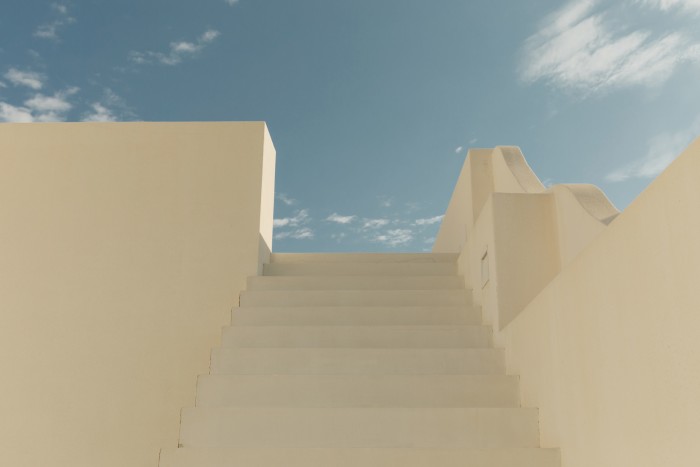
In Lipari, Kapoor has returned to the elements of village life that coloured her early childhood. You can only get to the island by ferry. Upon disembarking, one is greeted by local vendors selling cherries and figs from the back of their trucks. “I like that it’s not easy to get to,” says Kapoor of the house’s comparative isolation. “The moment I arrive after the nine-hour journey from London, I feel my shoulders drop. I buy vegetables in the town square, rent a little car and 10 minutes later I open the door to my house.”
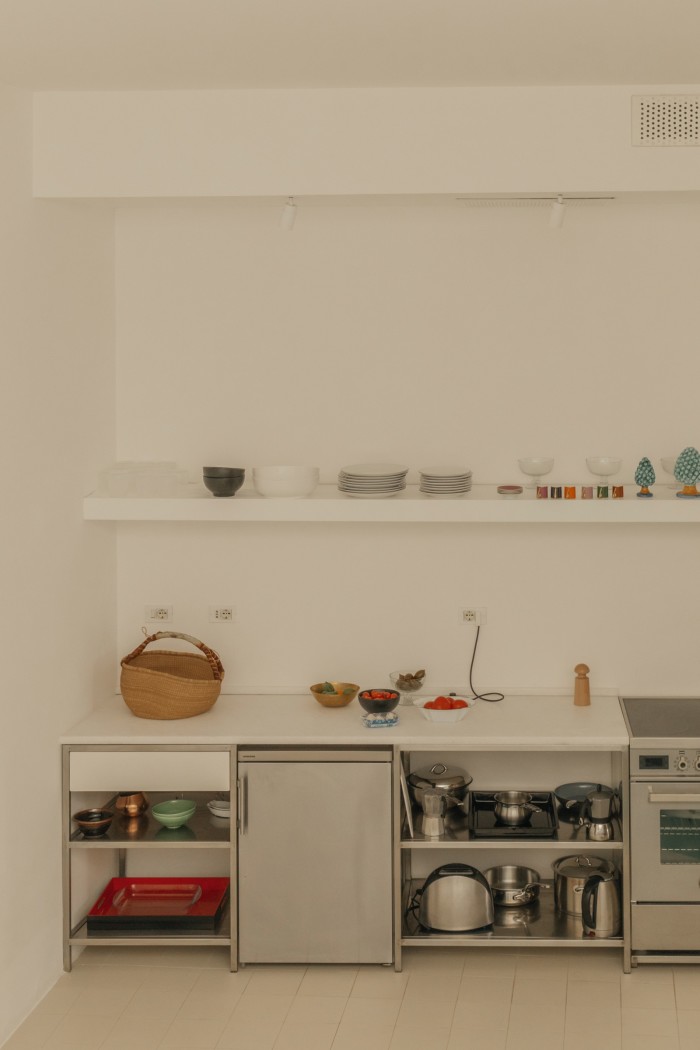
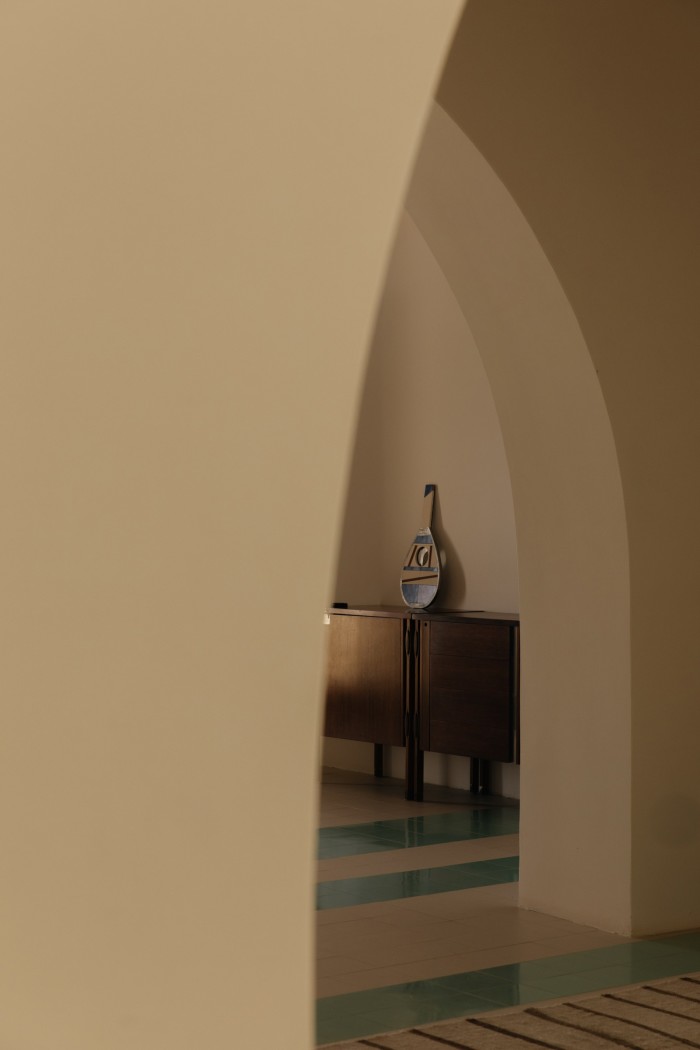
Not one for the early-morning hike, Kapoor prefers to spend long, easy days with the children or friends out on Nando’s boat. “He’s full of local knowledge and knows every corner of the island: he takes us to wonderful sea grottoes and the best coves for swimming that you have to be a local to find. Added to which he is a fantastic cook and makes the best spaghetti vongole I’ve ever tasted.”
There is a sense of timelessness on Lipari where slow, sun-drenched days are spent swimming, reading, watching swordfish jump or listening to the sound of the fishermen calling out their greetings as they chug out of the port in the early evening to catch supplies. “One of my really favourite things to do at the end of a wonderful, hot day out at sea is to come into the port in the early evening and go straight to a little café I like and have an icy mulberry granita – a Sicilian speciality – covered in a generous dollop of cream,” Kapoor says. “I honestly can’t think of anything I enjoy more.”
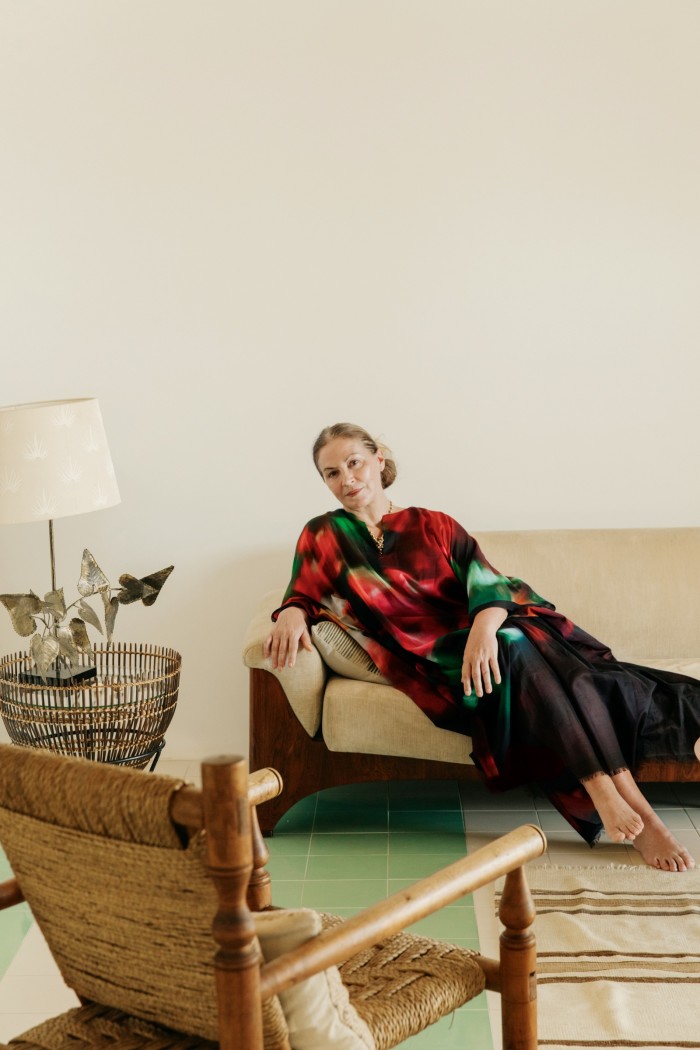
Kapoor has succeeded in building a new life for herself, a post-divorce success story. “I think this house means a lot to me because it came together on my terms. I come and go as I please, I like to cook and to entertain people here, but I also like to be alone, and because I’m in a village I never feel isolated.”
As Kapoor starts to prepare an aubergine parmigiana for dinner, the oven breaks down. Without a murmur of complaint she puts the ingredients back in the fridge, and walks the five-minute journey along the sea wall until she arrives at her local restaurant, Al Tramonto. Denis the proprietor greets her like a friend. This is her life on Lipari: unfazed, unhurried, unbelievably nice.
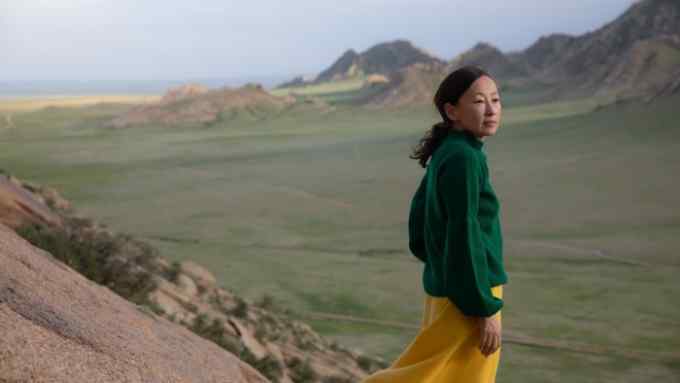
Comments